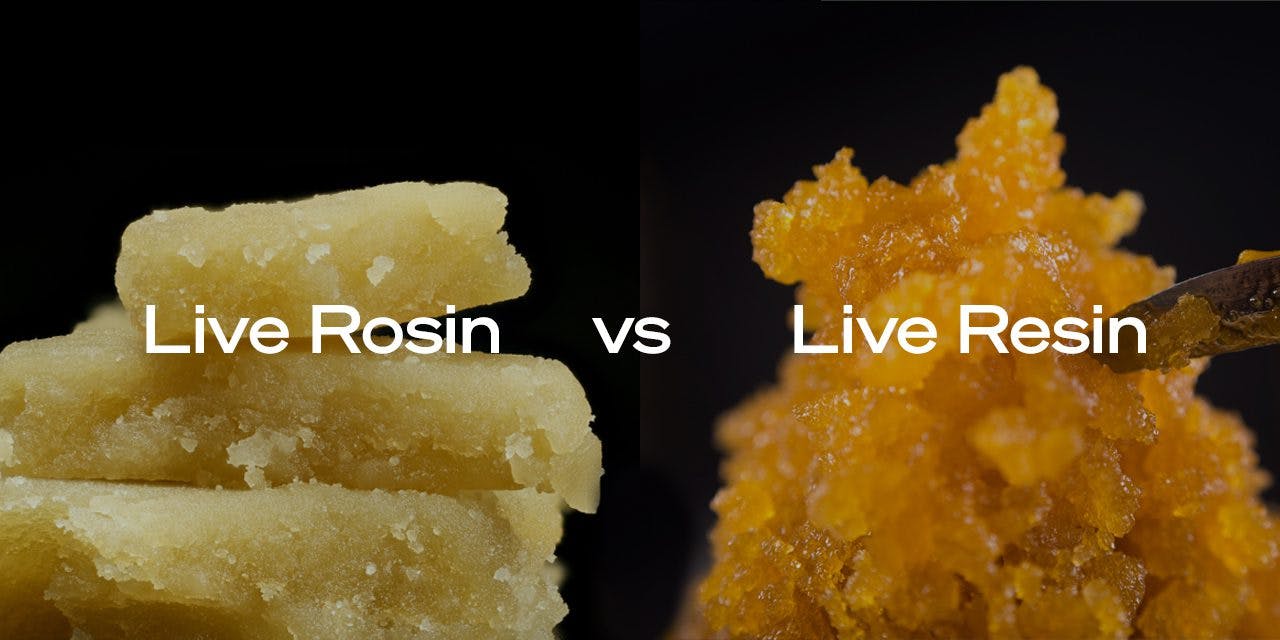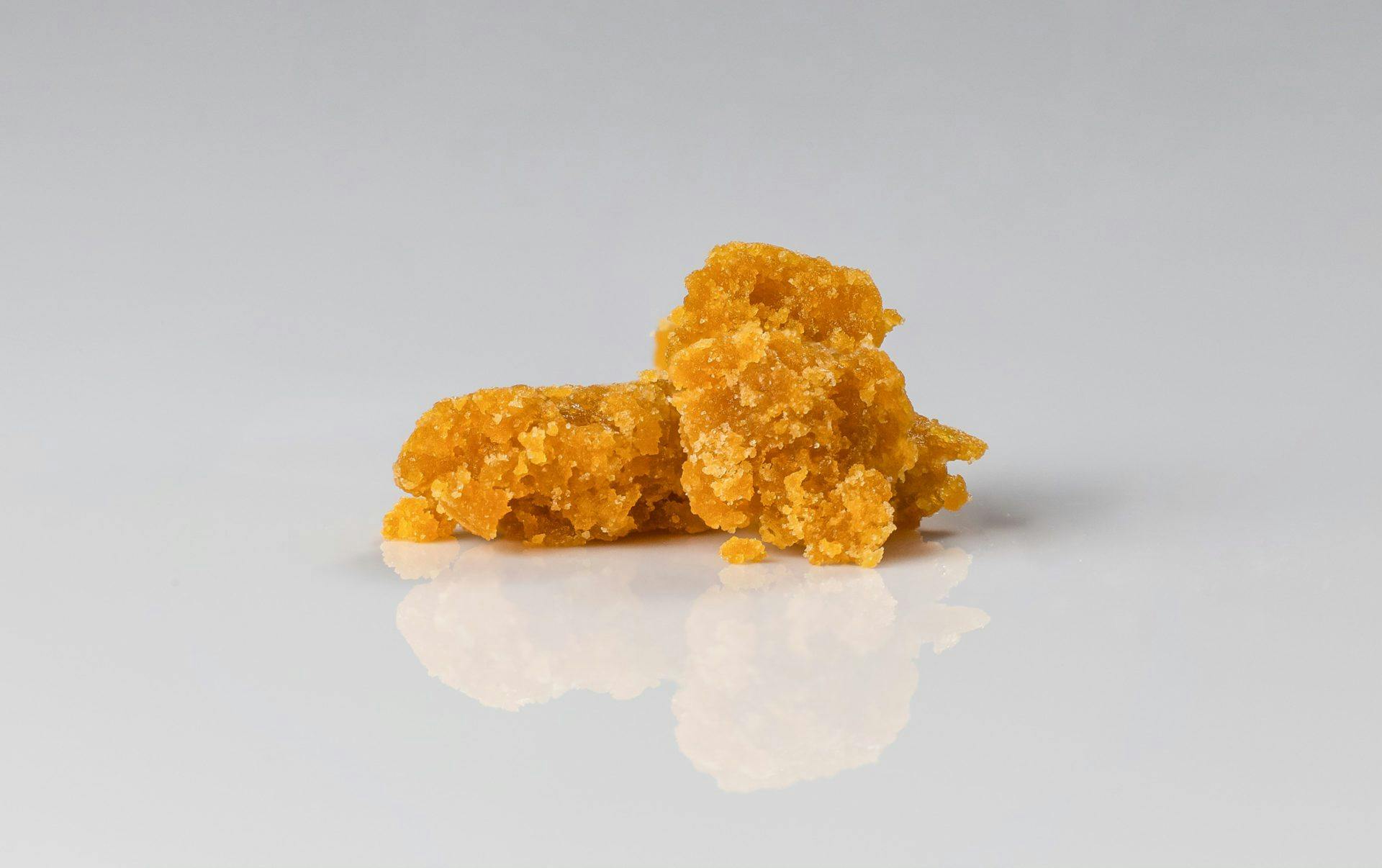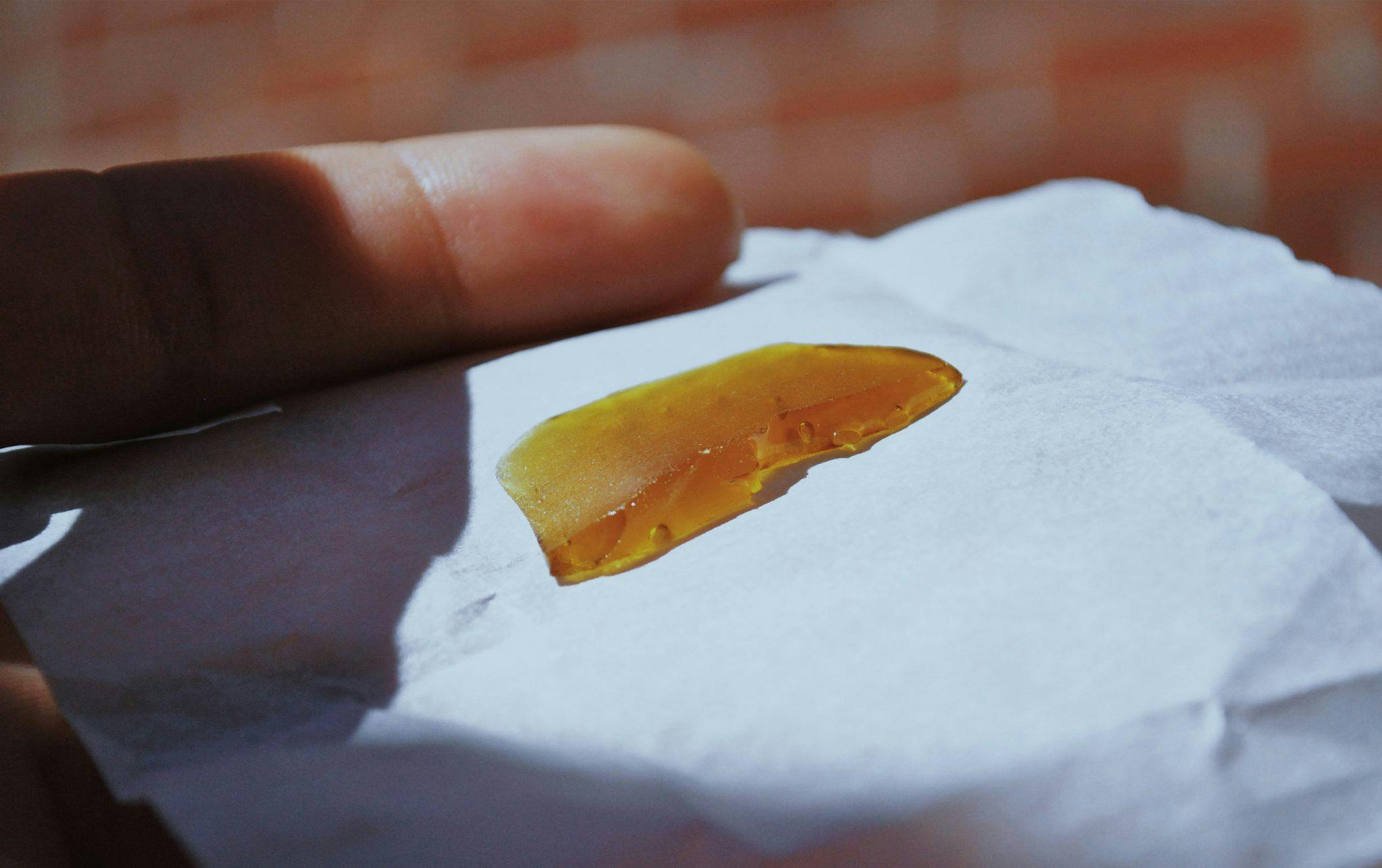Live Rosin vs Live Resin: Similarities and Differences

Article written by
Elena Schmidt
Content reviewed by

Dr. Lewis JasseyMedical Director - Pediatric Medicine
Most people who don’t identify as cannabis connoisseurs — AKA most of us — are perplexed by the difference between live rosin and live resin. After all, both are potent top-tier cannabis concentrates with comparable properties.
The main difference between live rosin and live resin is the extraction method used to produce them.
Both live rosin and live resin are made from cannabis trichomes.
Processors make live resin using chemical hydrocarbon solvents like butane and propane. In contrast, they create live resin through a solventless process involving heat, water, and high pressure. The difference between these extraction processes can yield slight but noticeable differences in color, flavor, texture, and strength.
Get your medical marijuana card
Connect with a licensed physician online in minutes.
What Is Live Rosin?
Live rosin describes a class of concentrates produced without chemical solvents to naturally retain the plant’s complete profile of cannabinoids, terpenes, and flavonoids. Concentrates like live rosin are the fastest growing cannabis category because they’re incredibly flavorful, fragrant, and potent.
Live Rosin Cannabis Products
Typically sticky, buttery, gloopy, hard, or waxy, these extracts come in various forms and consistencies, including:
- Fresh press live rosin
- Rosin badder
- Rosin budder
- Rosin jam
- Sift rosin
- Sift rosin vape pens
How It’s Created and What Makes it Live
The “live” part of the name refers to the unique method by which rosin makers dry the original cannabis plant matter.
Traditionally, cannabis processors hang or machine-dry plants after harvest, and these methods are safe and efficient. However, they also degrade the temperature-sensitive terpenes inside the live plant’s hairy appendages (known as trichomes, which are used to make different varieties of hashish).
To preserve these precious compounds, craft rosin producers immediately freeze the harvested plant instead. From there, the multi-step extraction process begins.
- After 24-48 hours of flash freezing, processors remove the “live” material and wash it in ice water, causing the terpenes and cannabinoid-rich trichome heads to separate from the plant.
- Afterward, processors drain the water and filter the remaining material through sieve bags to collect the buds.
- Processors then freeze-dry the soaked trichomes, allowing them to harden before micro-planing (or grating) the buds into a fine powder known as kief. Instead of kief, some manufacturers use bubble hash or high-quality flower.
- Finally, manufacturers take the material to a rosin press device, which applies heat and pressure to draw cannabinoids and terpenes out of the kief, hash, or flower into an oily form called rosin. Some people buy their own rosin press and make dabs at home.
- After the rosin press phase is complete, most producers refine the oily solution to create a consistency that you can easily vape or smoke.
Uses
Solventless live rosin concentrates in any form are potent, fragrant, and flavorful. You can use them in various ways depending on your preference.
Dab rigs: Smoking rosin in dab rigs — also known as dabbing — is one of the most common ways to use concentrates. Think of dab rigs like water bongs, except rigs are designed to vaporize dense concentrates instead of porous buds. Additionally, dab rigs require torches rather than lighters.
Vaporizer: If dabbing sounds too extreme for your taste, you can also use rosin vape pens. Lightweight, discrete, and simple to use, vapes allow you to take smaller hits than dab rigs, which means you can better control your dosage.
Joints or bowls: Another option is to smoke a rosin bowl or mix rosin concentrate with bud and add it to your pipe or joint.
Potential Benefits
One of the primary benefits of using live rosin is that it’s free from chemical solvents, making it safe, clean, and natural. Another attractive advantage is that live rosin is relatively easy to make at home if you have high-quality flower, a rosin press, and a desire.
Anecdotally, some medical marijuana patients prefer live rosin over traditional extracts because it contains the plant’s full spectrum of compounds, maximizing its therapeutic properties through a process known as the entourage effect.
The potency of live rosin and live resin could make them useful for managing chronic pain, insomnia, and nausea/vomiting.
Risks and Drawbacks
Live rosin extracts are extraordinarily potent, containing up to 80% THC. In other words, just one hit of a dab rig can create undesirable effects if you’re not prepared for the intensity. Typically, high-THC dosages like what you see in live rosin can increase the chances of adverse outcomes like:
- Paranoia
- Anxiety
- Sedation
- Dizziness
- Headaches
What Is Live Resin?
Live resin is a concentrate extracted from fresh frozen cannabis, blended with chemical solvents, and pressed. Wildly popular, these products are known for their robust cannabinoid and terpene profiles and high THC concentrations.
Download Free Guide to THC
Live Resin Products
Like live rosin, you can find live resin products in various forms and textures ranging from glassy to saucy, including:
- Sauce
- Shatter
- Butter
- Badder
- Sugar
- Crumble
- Diamonds
- Vape Oil
How It’s Created
Like live rosin, live resin starts as freeze-dried biomass to preserve the plant’s cannabinoids, flavonoids, and terpenes.
After 24-48 hours, processors remove the freshly harvested flower and start the process using a hydrocarbon extraction machine.
Unlike rosin, however, resin processors use chemical solvents to draw the compounds out of the plant.
Most producers use a blend of butane and propane because they’re highly efficient. At the same time, these chemicals are dangerous to ingest at high levels, so extractors must take extra steps to remove them from the final product.
After extracting the plant’s terpenes, cannabinoids, and flavonoids into an oily mixture, processors must heat the solution to evaporate the butane and propane.
To ensure no residual solvents remain, processors force the evaporated solvent gas back into the machine, reduce the temperature and recondense it into a liquid.
After thoroughly purging the extract, processors pour it into a processor to create the final live resin cannabis product.
Free Cannabinoid and Terpene Guide
Uses
Whether you prefer live resin to be saucy, buttery, brittle, or crumbly, the consumption methods are essentially the same. Like live rosin, you can vape live resin for a more controlled experience or use a dab rig for a more potent hit. You can also add your extract to a bowl or joint.
Potential Benefits
Live resin’s key advantage is a meticulous manufacturing process that ensures it retains the psychoactive and therapeutic effects that make cannabis unique. Live rosin properties include:
- Contains the plant’s complete chemical profile.
- Maximizes the synergistic entourage effect.
- Contains a potent concentration of terpenes, cannabinoids, and flavonoids.
- Exhibits an intense aroma and flavor profile.
- Acts fast and doesn’t require smoking.
Similar to live rosin, live resin’s high THC content makes it potentially very useful for chronic pain, nausea/vomiting, insomnia, and reducing opioid and benzodiazepine use.
Risks and Drawbacks
Most live resin cannabis products are safe to ingest when properly washed. So if you’re dabbing diamonds from a reputable brand, you shouldn’t have to worry about residual chemicals.
However, not every manufacturer operates at the highest safety standards or tests their products for these chemicals. To avoid inhaling unsafe compounds, purchase from brands that publish third-party laboratory test results confirming their formula is clean, avoiding purchasing vape products from the street or black market.
Aside from residual solvents, the risks associated with live resin typically align with rosin products. Inhaling THC concentrations of 45%-90% means you can quickly become too intoxicated to function if you’re not an experienced smoker.
Similarities and Differences Between Live Rosin and Live Resin
Experts say there are slight flavor differences between live resin and rosin extractions.
However, you might need a Guinness World record-winning palate to taste to make that distinction. Additionally, live resin typically takes on a creamy amber color after extraction, while live resin looks more like golden honey.
That said, refined rosin and resin products can crossover nearly anywhere in the color spectrum from white to brown, so shade-based identification is faulty at best.
In reality, live rosin and live resin are very similar in name, appearance, effects, and flavor.
Both are skillfully crafted products built for cannabis connoisseurs and THC lovers. Both preserve the plant’s natural flavor, aroma, and potency by freezing cannabis flower after harvest and using low temperatures throughout the production process. Live rosin sometimes contains less THC than resin, but if you’re concerned about intensity, you may not want to experiment with either of these potent products.
When you think about live resin vs. live rosin, the key difference is how they’re produced. Live resin requires chemical solvents, while live rosin is solventless.
Another notable difference is cost. Solventless live rosin products are typically more expensive because they require far more labor and are usually produced in small batches. That said, you can mitigate the cost barrier by making rosin at home with a simple press and very little training.
How to Decide Which Is Best For You
You might be wondering whether live resin or live rosin is right for you. Before answering that question, ask yourself how much experience you have with cannabis. If you’re ready for 45% THC or more, the choice between live rosin and live resin is entirely subjective.
Both cannabis products are extraordinarily potent, so the experiences will be similar.
When to Use Live Rosin
Smaller, artisanal brands typically produce live rosin products. So if you want to support boutique cannabis artists, consider investing in rosin over resin.
Additionally, live cannabis rosin products are the cleanest available extracts on the market. So if you’re looking for a natural option, live rosin is the right choice.
When to Use Live Resin
Countless reputable manufacturers follow strict standards to purge live resin of unsafe solvents. So, if you find a brand you know and trust and prefer a lower-cost product, live resin extracts are an excellent choice.
The Bottom Line
Neither is better or worse when comparing live resin vs. live rosin extractions.
In fact, both are exquisitely flavorful, aromatic, and full-bodied. Solventless live rosin might speak to your inner naturalist who wants clean, chemical-free creations.
On the other hand, live rosin might appeal because you prefer the product assortment and love the prices. Whatever the case, it’s essential that you have high-THC cannabis experience first before you decide.
As always, Leafwell can help you connect with a doctor who can answer questions and help you get your medical marijuana card.
Get Your Medical Card
Connect with a licensed physician online in minutes.


